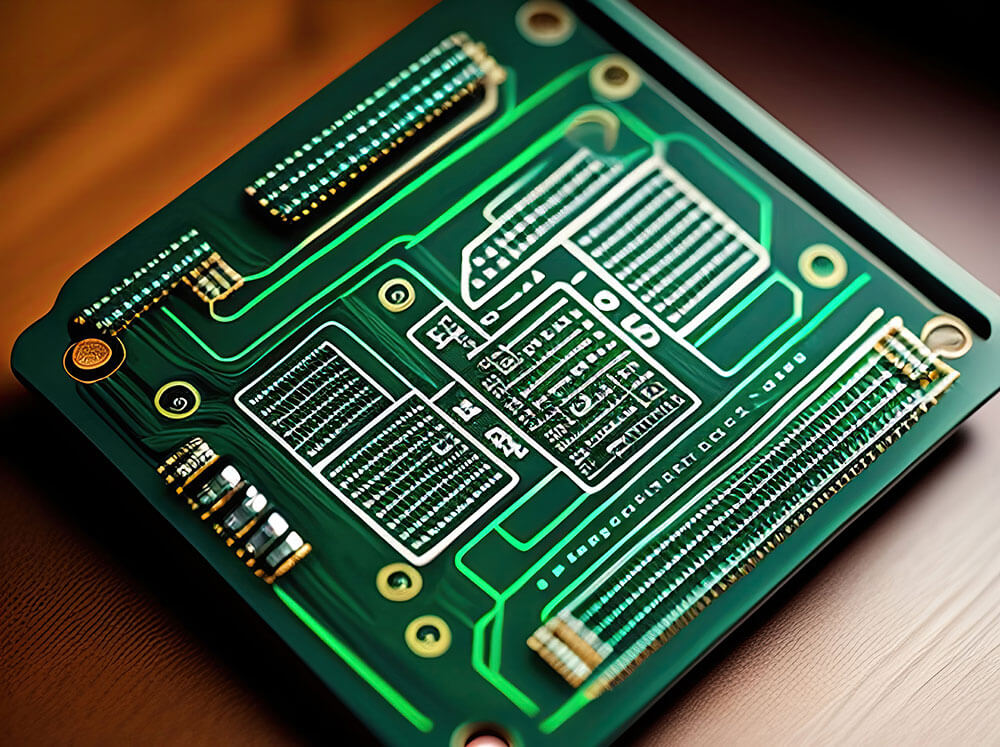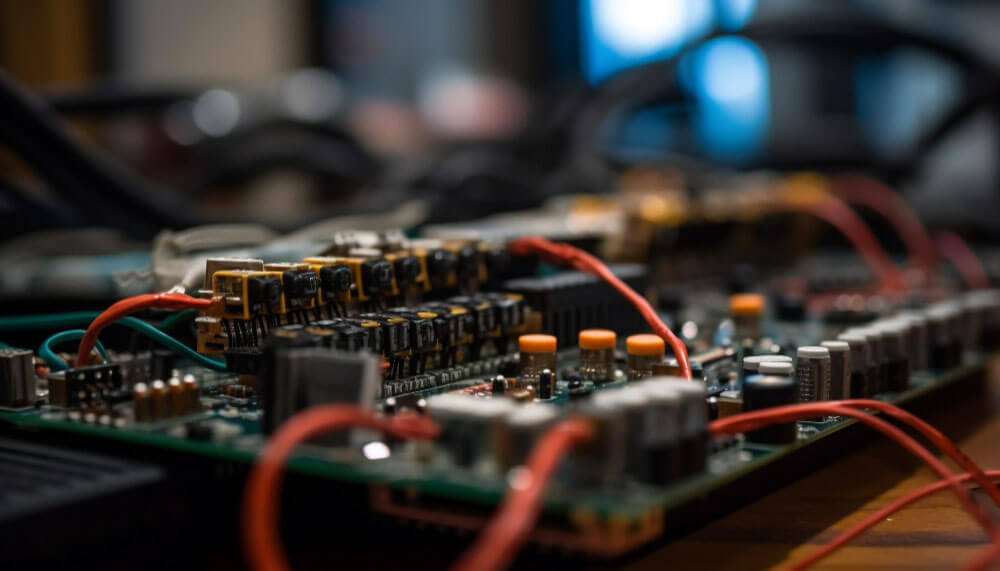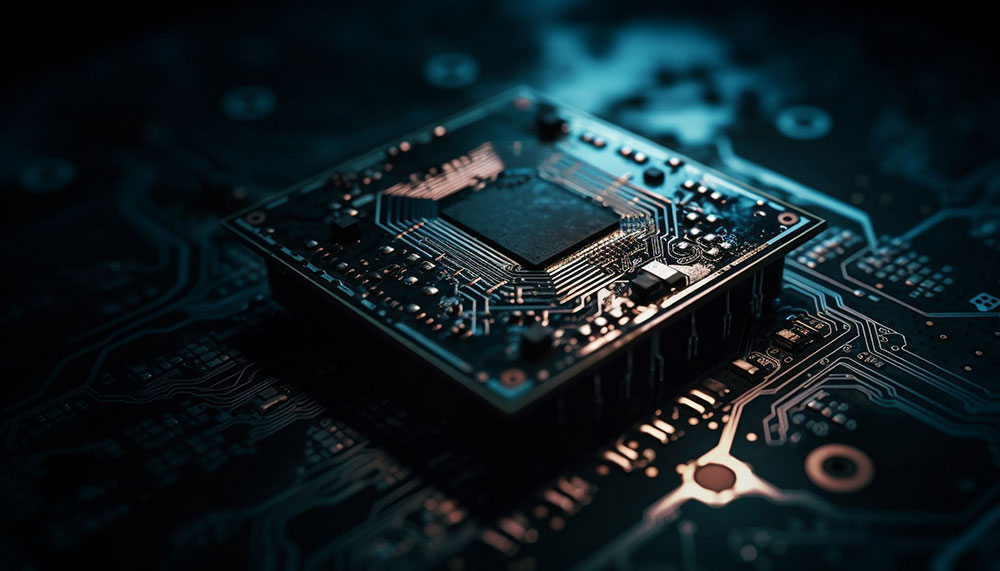A protoboard, often referred to as a prototyping board or breadboard, is a fundamental tool used in electronics for quickly and temporarily assembling and testing electronic circuits. It serves as a platform for creating and experimenting with circuit designs without the need for soldering.
A typical protoboard consists of a base made of plastic or other insulating material, with a grid of holes arranged in rows and columns. These holes are used to insert and connect electronic components like resistors, capacitors, integrated circuits, and wires. The holes are interconnected in predefined patterns, often following the standard layout of DIP (Dual In-line Package) components.

Table of Contents
Benefits of a Protoboard
Ease of Use: Protoboards eliminate the need for soldering, allowing components and wires to be inserted and removed easily. This makes them an ideal tool for experimentation and rapid circuit prototyping.
Reusability: Components can be repositioned and circuits can be dismantled without damaging the components or the board, making protoboards reusable for multiple projects.
Flexibility: Protoboards accommodate a wide range of component sizes and types, enabling designers to create circuits of varying complexity.
Breadboarding: The term “breadboarding” refers to the process of building and testing circuits on a protoboard. This process allows designers to verify the functionality of a circuit before committing to a more permanent implementation.
Educational Tool: Protoboards are commonly used in educational settings to teach students about circuit design, electronics, and the principles of electrical engineering.
Rapid Prototyping: Engineers and hobbyists use protoboards to quickly test out new ideas and concepts before designing a custom PCB. This iterative process helps save time and resources in the development cycle.

While protoboards offer flexibility and convenience, they have limitations. High-frequency circuits, sensitive analog designs, and complex projects may suffer from signal integrity issues or interference due to the board’s inherent capacitance and inductance. For these cases, more advanced tools like custom-designed PCBs are necessary.
A protoboard is an indispensable tool for electronics enthusiasts, students, and engineers alike. It provides a hands-on way to experiment with circuit designs, validate concepts, and troubleshoot issues before moving on to more permanent implementations. Whether it’s a simple LED circuit or a complex microcontroller project, the protoboard serves as a versatile platform for bringing ideas to life in the world of electronics.
Difference Between Proto Board and Prototype PCB
Proto board and prototype PCB manufacturing are two distinct approaches to circuit development, each with its own advantages and use cases.
Proto Board
A proto board, also known as a prototyping board or breadboard, is a physical platform used to build and test electronic circuits without soldering. It consists of a grid of interconnected holes where components can be inserted and connected using jumper wires. Proto boards offer simplicity and rapid experimentation, making them suitable for quickly assembling and testing circuit designs. They are particularly useful for educational purposes, hobbyists, and initial concept validation. However, proto boards have limitations in terms of signal integrity, complexity, and long-term reliability due to the temporary nature of their connections.
Prototype PCB Manufacturing
Prototype PCB manufacturing involves the fabrication of custom-designed printed circuit boards (PCBs) for testing and validating electronic designs before mass production. These prototype PCBs are created using professional PCB design software and manufactured through specialized processes such as etching or PCB prototyping services. Prototype PCBs offer higher reliability, more accurate signal integrity, and the ability to handle complex circuitry. They are crucial for developing advanced electronics, such as high-frequency circuits, intricate components, and projects requiring precise control over layout and impedance matching. Prototype PCB manufacturing allows engineers to simulate real-world conditions more accurately and refine their designs before moving to full-scale production.

Distinguishing Between These Two Types of Circuit Boards
- Flexibility and Complexity: Proto boards are versatile for quick experimentation but are limited in handling complex and high-frequency designs. Prototype PCBs offer greater flexibility for intricate circuitry and complex projects.
- Signal Integrity: Prototype PCBs are designed with specific trace widths, spacing, and impedance control to maintain signal integrity. Proto boards may suffer from signal degradation due to their temporary connections.
- Longevity: Proto boards are temporary and meant for short-term experimentation. Prototype PCBs can be designed for long-term use and can serve as a foundation for final product development.
- Professional Development: Prototype PCB manufacturing is essential for professional development, as it ensures that the final product meets performance, reliability, and manufacturing requirements.
- Customization: Prototype PCBs can be customized to specific project needs, accommodating various components, form factors, and design constraints. Proto boards offer limited customization and are typically standardized.
In summary, proto boards are a quick and basic way to test circuit ideas, while prototype PCB manufacturing offers a more comprehensive approach for developing professional-grade electronics with precise control over layout, signal integrity, and complexity. The choice between the two depends on the project’s requirements, complexity, and intended level of development.

Proto boards offer a convenient and swift solution for circuit experimentation as they don’t necessitate manufacturing processes. With proto boards, components are inserted into interconnected holes, and circuit connections are established using jumper wires. This simplicity enables quick testing and validation without the need for specialized fabrication. On the other hand, prototype PCBs are designed with precision using professional software, ensuring accurate signal integrity and layout. To materialize these designs, collaboration with a PCB manufacturer becomes crucial, particularly for low-volume production. Prototype PCBs are custom-manufactured, allowing for intricate layouts and precise component placement, ultimately catering to more complex projects where accuracy and reliability are paramount.